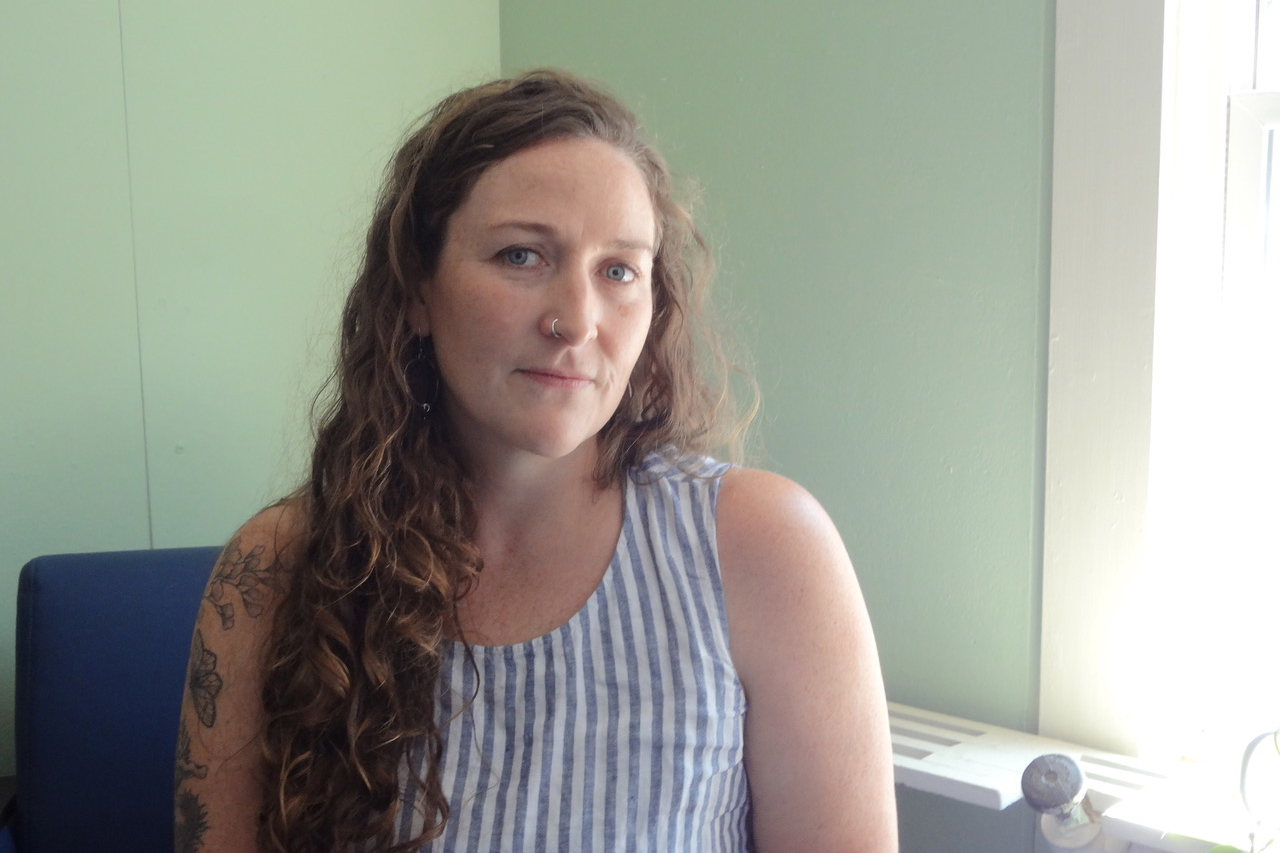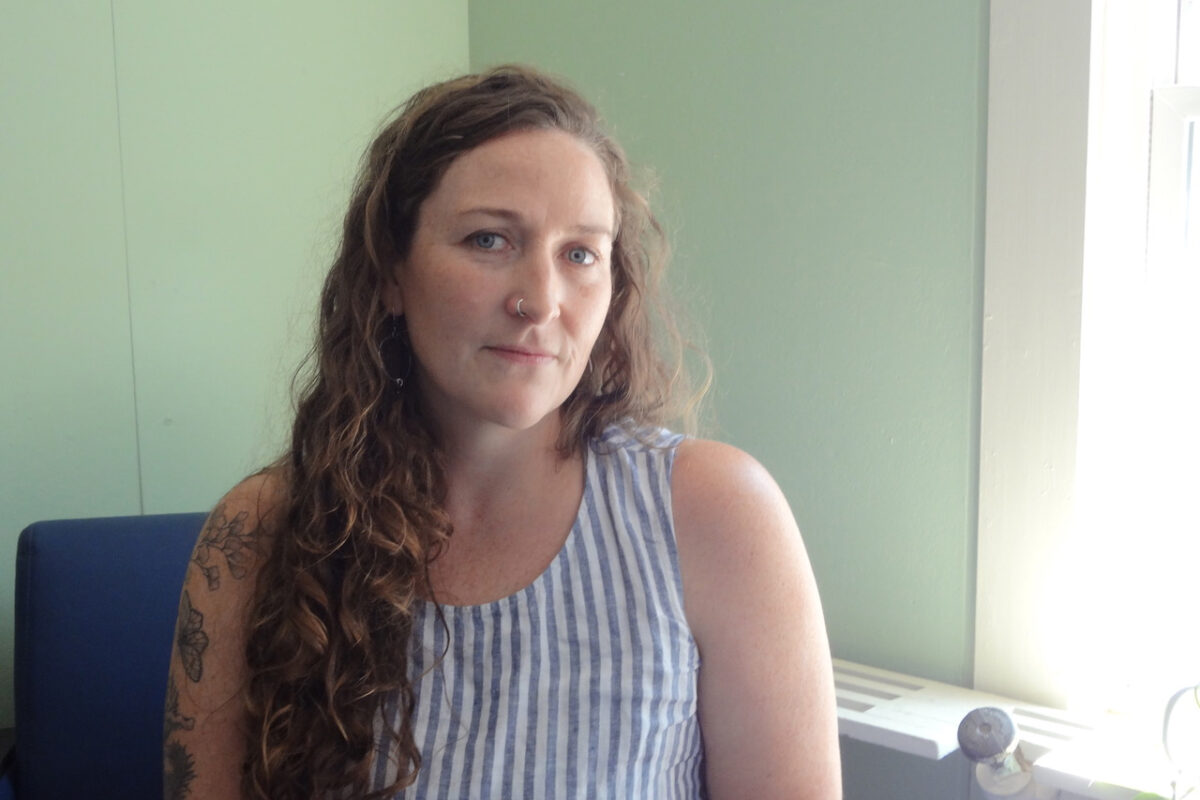This post was originally published on this site
BURLINGTON, Vt. — “You can’t inject a horse tranquilizer and think nothing bad is gonna happen” to you, said Ty Sears, 33, a longtime drug user now in recovery.
Sears was referring to xylazine, a sedative used for animal surgeries that has infiltrated the illicit drug supply across the country, contributing to a steady climb in overdose deaths.
Sears divides his time between Burlington and Morrisville, a village an hour to the east. In Burlington, he visits clusters of drug users, offering water, food, and encouragement.
He has been there, been down, done time, struggled to adhere to treatment regimens. But this, he said, is different: first, fentanyl — estimated to be 50 to 100 times as potent as morphine — and now xylazine, and the life-threatening wounds and sores it can cause.
Sears implores those he encounters who suffer the effects of these drugs to look at what they’re doing to themselves. But to little avail.
“They say they’re unable to get out of it — that they don’t have a plan to get out of it.”
Worse, those who seek help breaking their addictions face treatment options rendered less effective by the prevalence of fentanyl, xylazine, and other synthetic drugs. Vermont’s pioneering efforts in establishing a statewide program for medication for opioid use disorder, known as Hub and Spoke, now face significant new challenges.
Launched in 2012, Hub and Spoke put prescription medicines at the center of the treatment strategy, which many addiction specialists say is the most effective approach. Vermont offers methadone treatment at regional hub sites for those with the most intense needs, while smaller community clinics and doctors’ offices — the “spokes” — provide care such as dispensing the opioid withdrawal drug buprenorphine.
Advocates and experts in Vermont honed the model, and today hub-and-spoke systems or variations are in place nationwide, including in California, Colorado, Maine, New Hampshire, and South Carolina.
But the rise of fentanyl, xylazine, and stimulants is undercutting the effectiveness of addiction medications.
Commonly administered doses of buprenorphine, better known as Suboxone — the brand name for a combination of buprenorphine and naloxone — have proved less effective against fentanyl, and commonly used doses can trigger violent, immediate withdrawal. Neither Suboxone nor methadone is designed to treat addiction to xylazine or stimulants.
The Centers for Disease Control and Prevention estimates that of the more than 111,000 drug-overdose deaths in the U.S. in the 12-month period ending in April, more than 77,000 involved fentanyl and other synthetic opioids. The nation has also seen a significant increase in overdose deaths from co-use of stimulants and opioids. Vermont has experienced a spike in the use of cocaine and, more recently, methamphetamine.
“There was a time when we couldn’t have pictured things being worse than heroin,” said Jess Kirby, director of client services for Vermonters for Criminal Justice Reform, which offers services to counter substance use disorder. “Then we couldn’t picture things being worse than fentanyl. Now we can’t picture things being worse than xylazine. It keeps escalating.”
In Vermont, the Hub and Spoke program is part of the statewide Blueprint for Health, with hubs in relatively populous areas of this largely rural state.
A patient enters the system for assessment and initial induction at one of nine hubs, and then, once stable, is transferred to a spoke. If that patient relapses or needs more intensive care, they can be transferred back to the hub. The spokes typically offer Suboxone — most effective for those with mild to moderate opioid dependence — but not methadone, which is more regulated.
Kirby — who began using opioids in her early teens, has been in recovery for about 15 years, and is Ty Sears’ longtime case manager — said a benefit of the hub-and-spoke model is that it offers support to primary care doctors and other practitioners who might otherwise be hesitant to prescribe medications to treat addiction. (Federal officials recently relaxed rules governing which doctors can prescribe buprenorphine.)
Erin O’Keefe, who runs the Burlington-based Howard Center Safe Recovery program, said the model’s flexibility has been key: from being fully integrated into primary care, whereby addiction is treated like any other chronic disease, to the other end of the spectrum, “making sure that people who are still in chaotic-use cycles receive harm reduction approaches” to keep them alive another day.
Vermont had the 10th-largest increase in fentanyl deaths for the 12-month period ending in April. Tony Folland, clinical services manager with the Vermont Department of Health’s Division of Substance Use Programs, said fentanyl is now implicated in about 96% of overdose deaths.
Meanwhile, xylazine, commonly called “tranq,” is causing extreme concern. State Department of Health records indicate that almost 1 in 3 opioid overdose deaths so far this year involved xylazine. And those working on the front lines report seeing a marked increase in the extreme wounds it often causes.

The challenges providers now face underscore the need to be prepared to respond in the moment. It’s essential, O’Keefe said, to capitalize on someone’s motivation for change, “and that motivation can be so fleeting — like, ‘I have enough in the tank to make one phone call, and if that phone call doesn’t go well, I’m back in the game.’”
Folland said Vermont now prescribes more medication for opioid use disorder per capita than any other state. He estimates between 45% and 65% of people with opioid use disorder receive medication.
But these challenges are unprecedented. “We have a drug supply that’s contaminated with xylazine, with fentanyl, and we know that people are struggling a lot more and are at a lot higher risk,” Kirby said. “It’s not just overdose to be concerned about anymore. It’s life-threatening wounds and infections.”
In response, advocates have asked state officials to fund more contingency management, a treatment approach that provides rewards to patients who refrain from illicit drug use. They also strongly encourage more widespread access to methadone as an alternative to buprenorphine, which is often proving less effective in countering the potency of fentanyl.
According to Folland, eight opioid treatment programs in communities throughout the state offer methadone, with one more soon to come. The goal, he said, is to prevent anyone from having to travel farther than a half-hour or so to access it.
Easier access to methadone would also require loosening federal restrictions.
“Methadone is probably the most regulated medication in the United States. We’ve got to figure out a way to make it more accessible,” said Kelly Peck, director of clinical operations for the University of Vermont Center on Rural Addiction. “We’ve got decades worth of data at this point, showing that methadone is safe and efficacious.”
For Kirby, O’Keefe, and their colleagues, more resources can’t come quickly enough.
“People dying — that’s what I’m seeing, every day,” Sears said.
Sears has been fortunate. What has served him in his recovery is the tolerance of those who’ve helped him along the way, and flexibility. There have been times when he was allowed to remain on Suboxone while still using stimulants. He is a recent graduate of a contingency management program administered by Vermonters for Criminal Justice Reform, the organization for which Kirby works.
“She counsels me,” Sears said. “She hears me out.”
Glimpsing a flicker at the end of the tunnel, advocates acknowledge, will require availing an arsenal of options to counter a shifting, and lethal, crisis.
“It’s almost like our understanding is changing from really seeing this, on a social level, as episodic to seeing it as chronic,” O’Keefe said, emphasizing that as the drug-supply landscape shifts, approaches to countering it must evolve as well.
This article was produced by KFF Health News, formerly known as Kaiser Health News (KHN), a national newsroom that produces in-depth journalism about health issues and is one of the core operating programs at KFF — the independent source for health policy research, polling, and journalism.
